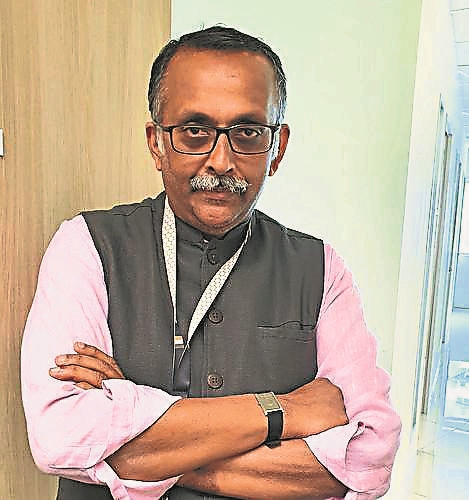[Cervical Cancer Special Topic]Cervical cancer was not her fault, breaking prejudice and caring for survivors
[ad_1]
Text: Yang Qianni Arrangement: Liang Yingxiu
(KUALA LUMPUR) Cervical cancer is associated with sexually transmitted human papillomavirus (HPV) infection. Apart from the shock of the diagnosis, patients also face shame and stigma.
When you are diagnosed with cancer, your partner is often your strongest backing. However, the relationship between cervical cancer patients and their partners may be severely tested in terms of loyalty and trust. They may not be able to get the same support and encouragement as other patients, and they may also worry that their condition will be known by others, resulting in delays in seeking medical advice or even giving up treatment.
In addition to the need to break down prejudice and let the public know that cervical cancer is not anyone’s fault, we also need to be “sensitive” when providing support and assistance to cervical cancer patients.
There are many definitions of cancer survivorship, but they are basically the same. The National Coalition of Cancer Survivors (NCCS) defines a person as a survivor from the moment of cancer diagnosis until the end of life.
Later, the U.S. Centers for Disease Control and Prevention (CDC) expanded its definition to include family members, friends, and caregivers of patients affected by cancer.
In 2010, the British National Cancer Survivors Initiative (NCSI) expanded the scope again, in addition to the disappearance of cancer, it also includes patients who cannot be cured, coexist with cancer, and cancer recurrence. Therefore, people who are receiving initial treatment, are in remission or beyond treatment after treatment, and have terminal cancer are all cancer survivors.
(NCSM) Chairman and Medical Director
Dato’ Dr Sauthali
Survivors Anxious, Helpless, Isolated
Dato Dr Saunthari Somasundaram, President and Medical Director of the National Cancer Society of Malaysia (NCSM), said that the diagnosis of cancer will change everything in life, and it is caught off guard, and it is difficult for ordinary people to empathize.
“Many survivors describe being on a sinking ship and feeling powerless no matter what they do. Common psychological issues they may have include anxiety, depression, isolation and negative self-image.”
Physiological effects of cancer and side effects of long-term or terminal treatment, including pain, fatigue, dyspnea, sleep disturbance, cognitive impairment, lymphedema, peripheral neuropathy, hot flashes, osteoporosis, sexual dysfunction, infertility , bowel or bladder dysfunction, etc.
In addition, they will also face financial difficulties, unemployment, spiritual and religious problems, social isolation and inability to continue to play their original role (role disruption, such as losing the breadwinner of the family). There may be other cancers and fears of recurrence or secondary cancers.
She said that when cancer patients are full of information, afraid and confused, they need medical professionals, society and friends to lend a helping hand to help them get out of the maze. Such support should not only start from diagnosis and continue after treatment, but also take into account the patient’s physical, psychological, emotional, social and economic impact, such as follow-up care (including routine health checks), terminal treatment impact, cancer recurrence, secondary Second cancer and quality of life related issues, not only limited to cancer patients, but also relatives and friends around.
“However, when we talk about cervical cancer, we cannot ignore another layer – since almost all cervical cancers are associated with human papillomavirus (HPV) infection, and the main route of transmission of this virus is sexual contact, people often think that Cervical cancer patients ‘must have done something wrong’, ‘have a lot of sexual partners’ or ‘have sex before marriage’, etc., all of which have brought different degrees of impact on patients.”
No clear guidelines for caring for survivors
Studies have shown that patients who only have a positive HPV test (undiagnosed cervical cancer) will be as shocked by the results as cancer patients, but the difference is that there will be shame and stigma. When you are diagnosed with cancer, your partner is often your strongest defense; however, cervical cancer patients and their partners can be severely tested in terms of loyalty and trust. You can’t get the same support and encouragement as other patients, and you also worry that your condition will be known by others, which leads to delays in seeking treatment or even giving up treatment.
Because of the link between HPV infection and sexually transmitted diseases, in India, Nepal and Africa, many women do not seek medical treatment in order to avoid disclosing their condition, and choose alternative medicine. abuse and self-isolation.
Therefore, in addition to breaking prejudice and letting the public know that getting cervical cancer is not anyone’s fault, it is also necessary to be sensitive enough when providing support and help for cervical cancer patients. However, there is currently a lack of clear practical guidelines for caring for survivors. It’s very important that it doesn’t have to be a very large program, but at least provide a framework for cancer survivors to follow and understand the obstacles they will face.
She cites, for example, that survivors’ values and treatment preferences should be linked. Both are cervical cancer patients, one is 60 years old and has several children, and the other is only 30 years old and has no children, so whether the treatment plan can preserve fertility and how it affects sex life, the former will not be affected as much as the latter so big.
The study found that knowing how common HPV infection is can slightly reduce anxiety, stigma, and shame in patients compared to simply knowing that HPV infection is a sexually transmitted disease. Therefore, we still need to promote and disseminate information about HPV infection in order to eliminate the stigma of cervical cancer in society. For patients, the support group not only enables them to receive care and assistance on their way to fight cancer, reduces loneliness, helplessness and anxiety, but also improves the quality of life and positively affects the treatment outcome.
Counseling service to help understand the medical certificate
The services provided by the National Cancer Society of Malaysia (NCSM) mainly have 3 pillars: education, care and support. Education can be summarized as HELLP, namely health education (education), health knowledge (literacy), health promotion (promotion) and health policy (policy). From time to time, we organize lectures in different languages, basic skills workshops, distribution of teaching materials, community screenings, school smoking cessation awareness campaigns, policy advocacy and social campaigns, etc., especially by promoting knowledge about HPV infection and working to break the stigma change.
In terms of nursing care, in addition to medical diagnosis, they also provide medical counseling services (medical counselling), mainly hoping to improve health knowledge and strengthen patients’ individualized medical decision-making power. After receiving the medical certificate and various test reports, many patients actually do not understand the above content. Due to the time pressure of many patients waiting outside, they dare not ask the doctor too many questions. Sometimes, the doctor recommends treatment A to the patient, but when meeting other cancer patients, the other party’s treatment is B. The patient may feel puzzled and even have a sense of distrust of the doctor and the course of treatment.
Therefore, the focus of medical consultation services is to help patients understand the medical certificate or report. Without time limit, NCSM can explain the condition, possible impact and treatment in detail. What needs to be clarified is that we will not suggest other treatment methods or tell patients how to make a decision, but answer questions that patients have too late to ask their doctors so that they can understand their own treatment methods.
In addition, if patients are seeking examination or treatment services, they can also direct them to different hospitals or medical centers, saving time and avoiding delays in treatment. NCSM itself also has a Cancer Health Screening Clinic (CHSC), a Nuclear Medicine Center (NMC), and a one-stop health and cancer screening center for men and women.




Associate Professor Ganesh
NCSM assistance program helps patients buy medicines at low prices
NCSM also has a Patient Assistance Program (Patient Assistance Program). For innovative, expensive or drugs that are not covered by government hospitals, NCSM can provide a way to purchase drugs with a small management fee, allowing patients to purchase drugs at a lower price, because it is not a profit-making organization , without markups from it.
Associate Professor Ganesh Ramachandran, dean of the private university’s medical school, pointed out that in terms of support, the main thing is to ensure that patients are not alone on the road to fighting cancer and get help whenever they need it.
“We have resource and wellness centres, psychosocial support services and the Children’s Home of Hope, workshops, classes, support groups, yoga and qigong classes for survivors.”
“The NCSM helpdesk (helpdesk) is run by cancer survivors so patients can walk into the center anytime and talk to other survivors on the ground. Our support groups also include women cancer survivors organization Pink Unity, young cancer survivors , as well as lung cancer, prostate cancer and gynecological cancer tissues.”
4th most common cancer in women
It must be mentioned that the cancer information service (cancer information service), patients can talk to medical experts (experienced oncology nurses), and learn about the latest and certified cancer information in Malay, English, Chinese or Tamil, such as Treatment or side effects, etc., or ask about financial assistance, psychological support, pre- and post-operative preparation, palliative care, or diet and nutrition.
This free cancer hotline service is open from Monday to Friday, 8.30am to 4.30pm. Call 1800-88-1000 or email [email protected]. These services are free to cancer survivors and caregivers.
He said that according to the report of the World Cancer Research Fund, there were 18 million new cases of cancer worldwide in 2018, of which women accounted for 47%. Cervical cancer is the fourth most common cancer in women. Among the more than 8 million cancer cases, nearly 600,000 cases are cervical cancer.
90% of women recover from infection
Almost all cervical cancers are associated with HPV. Other cancers associated with HPV infection include cancers of the anus, vulva, vagina, penis, and oropharynx. Not all types of HPV cause cancer, and most men and women do not develop cancer when infected with HPV.
There are nearly 100 subtypes of HPV, and 70% of cervical cancers are caused by HPV 16 and 18. The common oncogenic subtypes are HPV 31, 33, 45, 52 and 58. Transmission of the HPV virus is largely related to personal sexual behavior, such as multiple sexual partners or early sexual intercourse, and other risk factors include smoking, the presence of other sexually transmitted infections, and immunocompromise.
Cervical cancer does not develop immediately after exposure to HPV. While 90 percent of women recover from infection, the rest see HPV progress to a precancerous form before it can turn into cancer. In general, this process takes about 15 to 20 years in healthy women, but may take 5 to 10 years in immunocompromised individuals.
The national cervical cancer screening program in Malaysia has existed since the 1960s, and it has been provided free of charge to women aged 20 to 65 since 1995, but it only achieved a screening rate of 45.7%, failing to reach the 80% target. It is about personal factors such as fear of cost, embarrassment, lack of awareness or time and fear of the inspection process. Institutional factors include long wait times for appointments, lack of a call-recall system, patient overload, and lack of resources, manpower, and educational materials.
HPV included in vaccination schedule
“The good news is that the cervical cancer vaccine was approved for use in Malaysia in 2007 and included in the national vaccination program in 2012, with a population coverage of over 80%. Another innovation is the elimination of Barriers to Cervical Cancer Screening (ROSE) program. Women can collect their own samples and send them for testing, overcoming barriers to getting a Pap smear from a healthcare provider.”
Cervical cancer is eradicated because of the identifiable cause in many patients, the long time it takes to develop cancer, effective screening methods, and most importantly, vaccines. Declines in either HPV infection or precancerous lesions have been reported in countries implementing HPV vaccination programs. This will reduce the incidence of new cases of cervical cancer.
The virus has not been detected for 10 years
1. The cervix is located at the bottom of the uterus, connecting the uterus and vagina.
There are more than 200 different types of HPV known, not all of which cause cancer, and only 12 to 15 high-risk viruses can cause cancer. 99.9% of cervical cancers are caused by high-risk HPV infection. Pap smear test and HPV vaccination are good prevention methods.
2. HPV infection is extremely common among both men and women
75% to 80% of sexually active people will be infected with HPV, but this does not mean that everyone will develop cancer, mainly because the autoimmune system can fight the virus, and more than 90% of people’s immune system is capable of fighting the virus.
3. Both men and women can be infected with HPV
In addition to cervical cancer, HPV can also cause vulvar, vaginal, anal (80%), genital warts, oropharyngeal and penile cancers.
4. Infection with HPV does not necessarily mean that life is complicated, and a single sexual partner may still be infected with HPV
Generally, it takes 10 to 15 years for the virus to remain undetected before it develops into cancer.

[ad_2]
Source link

![[Love Wants Sexual Happiness Series 358]Find the culprit and overcome psychogenic erectile dysfunction. Don’t let pressure affect your sexual happiness.](https://chinathenews.com/wp-content/uploads/2024/04/171111-780x420.jpg)

![[Wanqingyi Care]My health, my rights, customized medical methods in the last stage of life](https://chinathenews.com/wp-content/uploads/2024/04/ZZ1-100-780x420.jpg)
![[Kidney Transplantation Special Topic]The survival rate of transplanted kidneys is high without dialysis treatment three times a week](https://chinathenews.com/wp-content/uploads/2024/04/1311-780x420.jpg)



